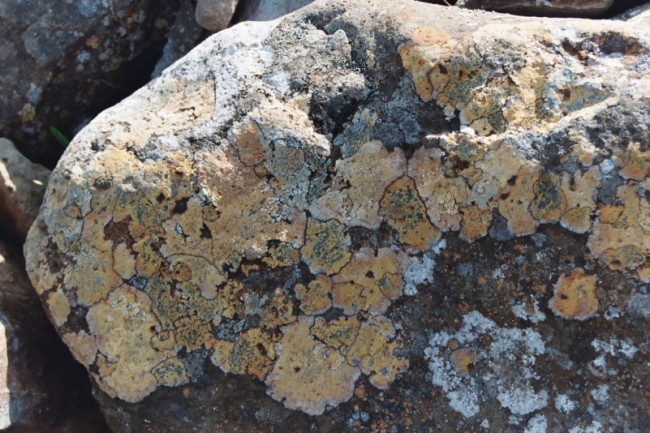A key player in biodiversity
We have seen that lichens can survive and reproduce very efficiently, and thus colonise a wide range of environments. But their extraordinary abilities do not only benefit themselves. Lichens are pioneering organisms in environments, modifying them by their abilities and helping to make them habitable for other species. They are also an essential source of food for certain animals. They are also useful to humans: they can be used to dye wool, some have therapeutic properties but they are also used in air pollution research.
Thanks to their extraordinary survival abilities, lichens are often the first organisms to colonise very hostile environments, where it is very cold, hot or dry. They are pioneer species, in a way preparing the ground for other living beings. Lichens "digest" the rock by producing acids and then releasing the minerals necessary for the future growth of mosses and other plants. They cover 50-90% of the soil in boreal forests.
Lichens are part of the life cycle of many species. For example, they are the main winter food of reindeer in the northern regions. Some bird species are also great connoisseurs of lichens. For example, the nest of the long-tailed tit can contain up to 3000 fragments of lichen thallus! Why are lichens so popular with birds? They are probably looking for certain properties that are very useful to them: lichens help to camouflage, insulate and disinfect the nest.
Although they do not have the necessary digestive arsenal, humans have also managed to incorporate lichens into their diet, particularly in the form of flour for making bread. As early as antiquity, they were also used for therapeutic purposes. Nowadays it is mainly Icelandic lichen (Cetraria islandica) and pulmonary lichen (Lobaria pulmonaria) that are used in the composition of throat lozenges, cough syrups and homeopathic remedies.
Lichens are therefore essential players in biodiversity, profoundly and sustainably transforming most terrestrial environments. In particular, they are a source of food, mineral salts, building materials and even therapeutic treatments!
Et dans la recherche…
Les lichens sont aussi utilisés dans la recherche scientifique, notamment par les chercheurs du Muséum et de Sorbonne Université… Les lichens sont entre autres exposés à la pollution atmosphérique, mais toutes les espèces ne sont pas affectées de la même manière par la pollution. Certaines y sont très sensibles et meurent rapidement quand l’air devient pollué, d’autres au contraire sont très résistantes et d’autres encore sont favorisées par certains types de pollution. C’est le cas, par exemple, des lichens dits nitrophiles (qui aiment l’azote), favorisés par la pollution azotée de l’air principalement produite par les transports, le chauffage et l’agriculture. Les données récoltées par leurs observations permettent donc d’évaluer la pollution de l’air, pour peut-être pouvoir ensuite y remédier.

